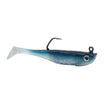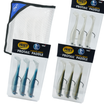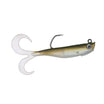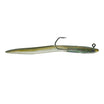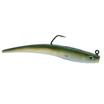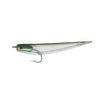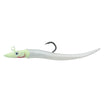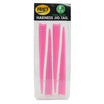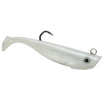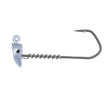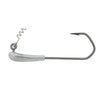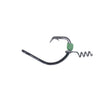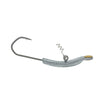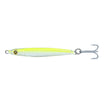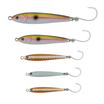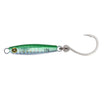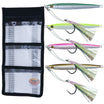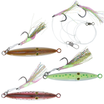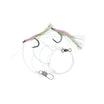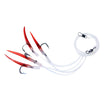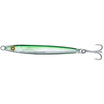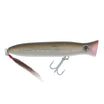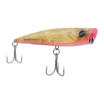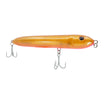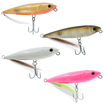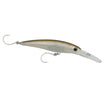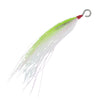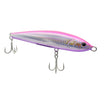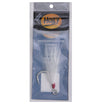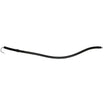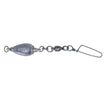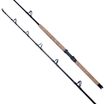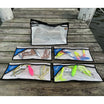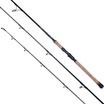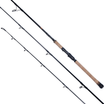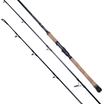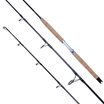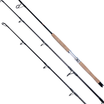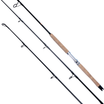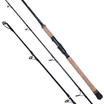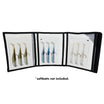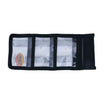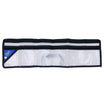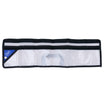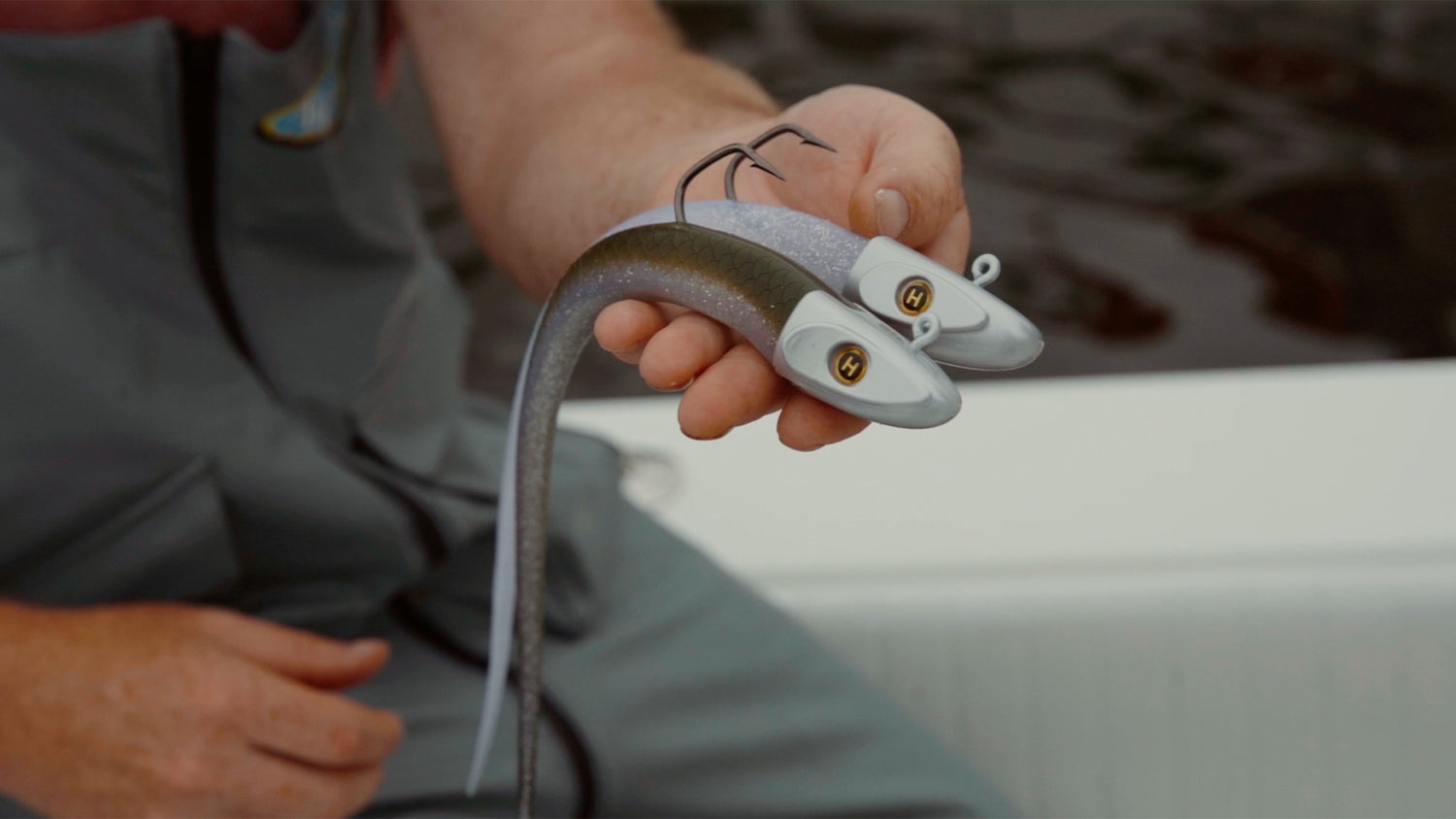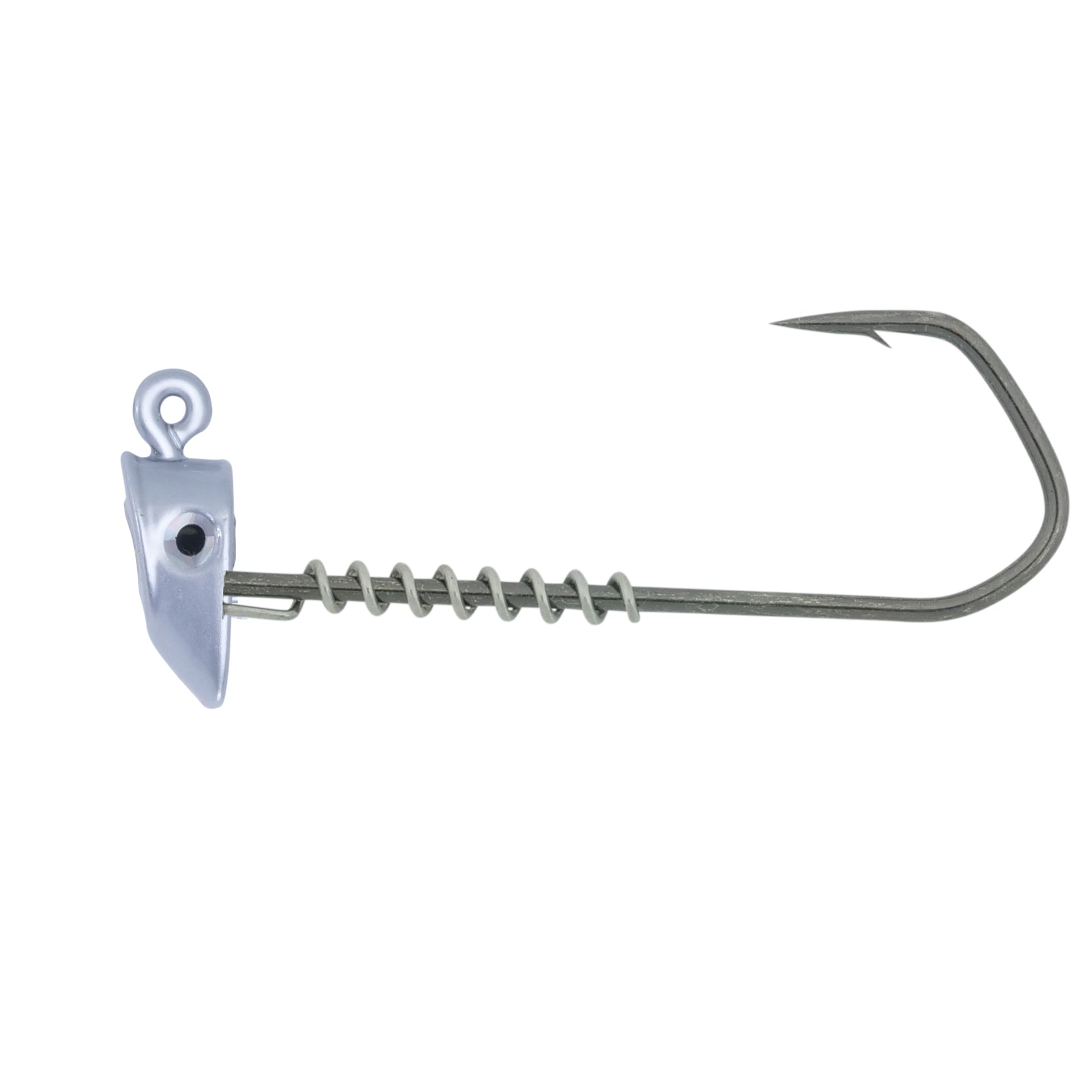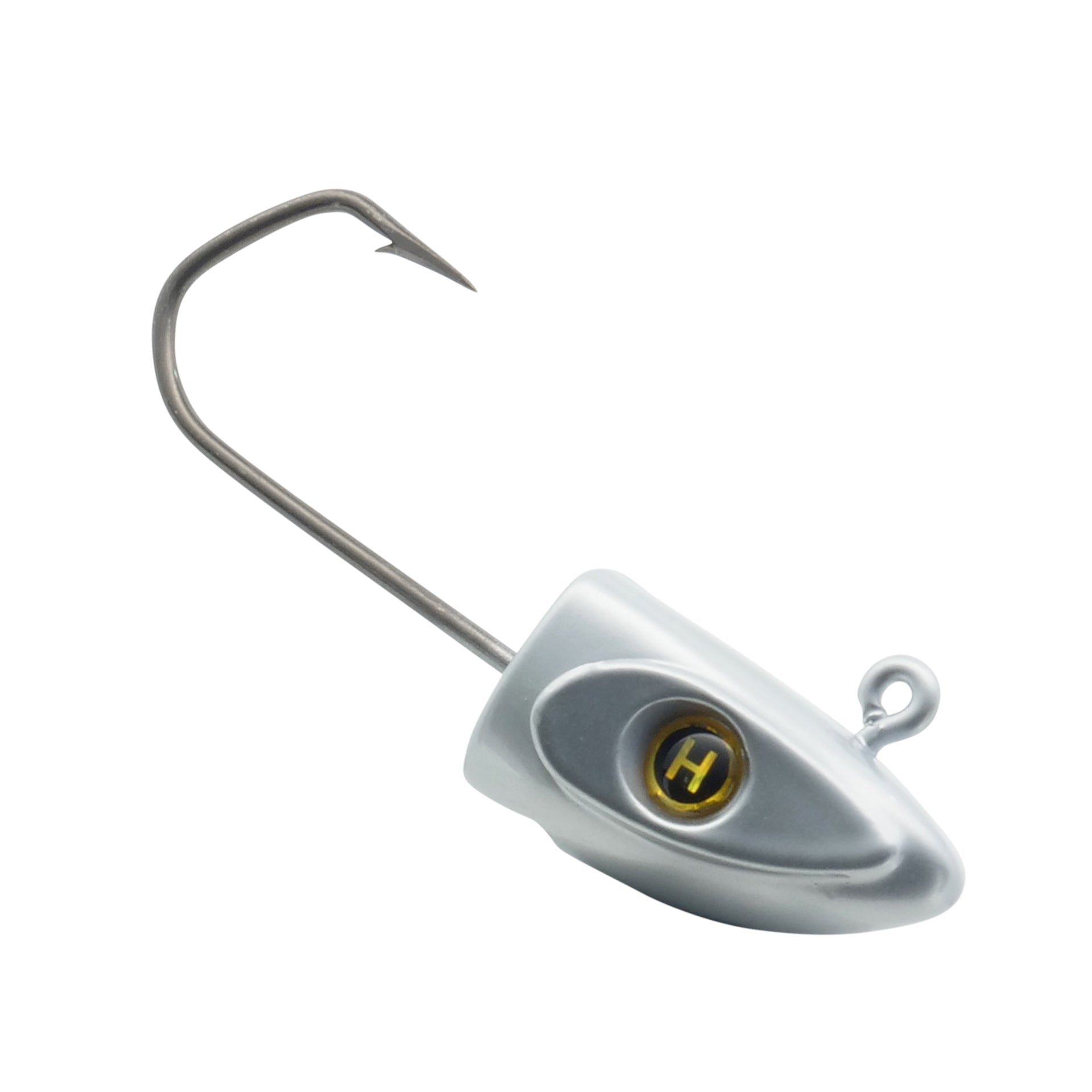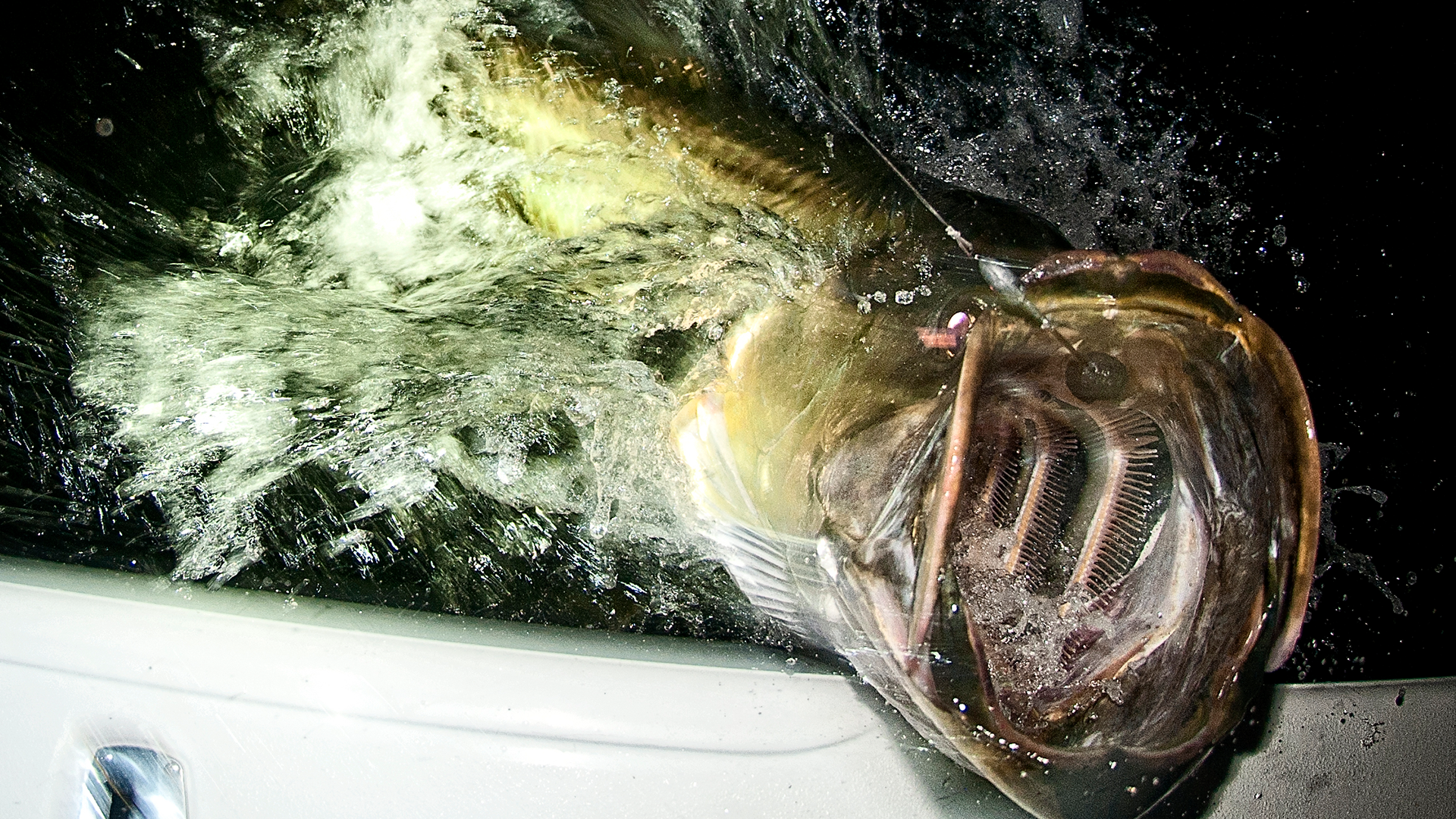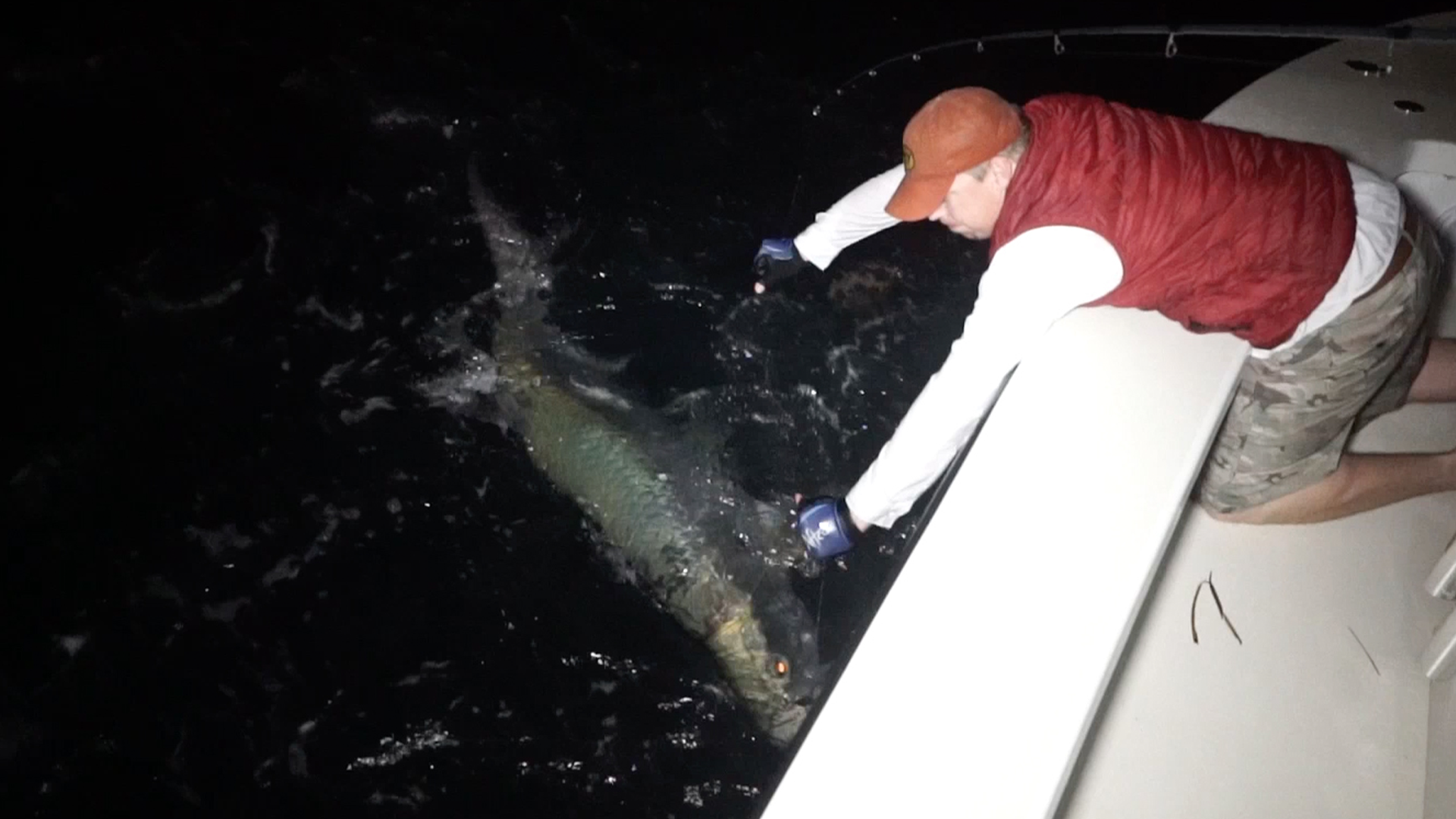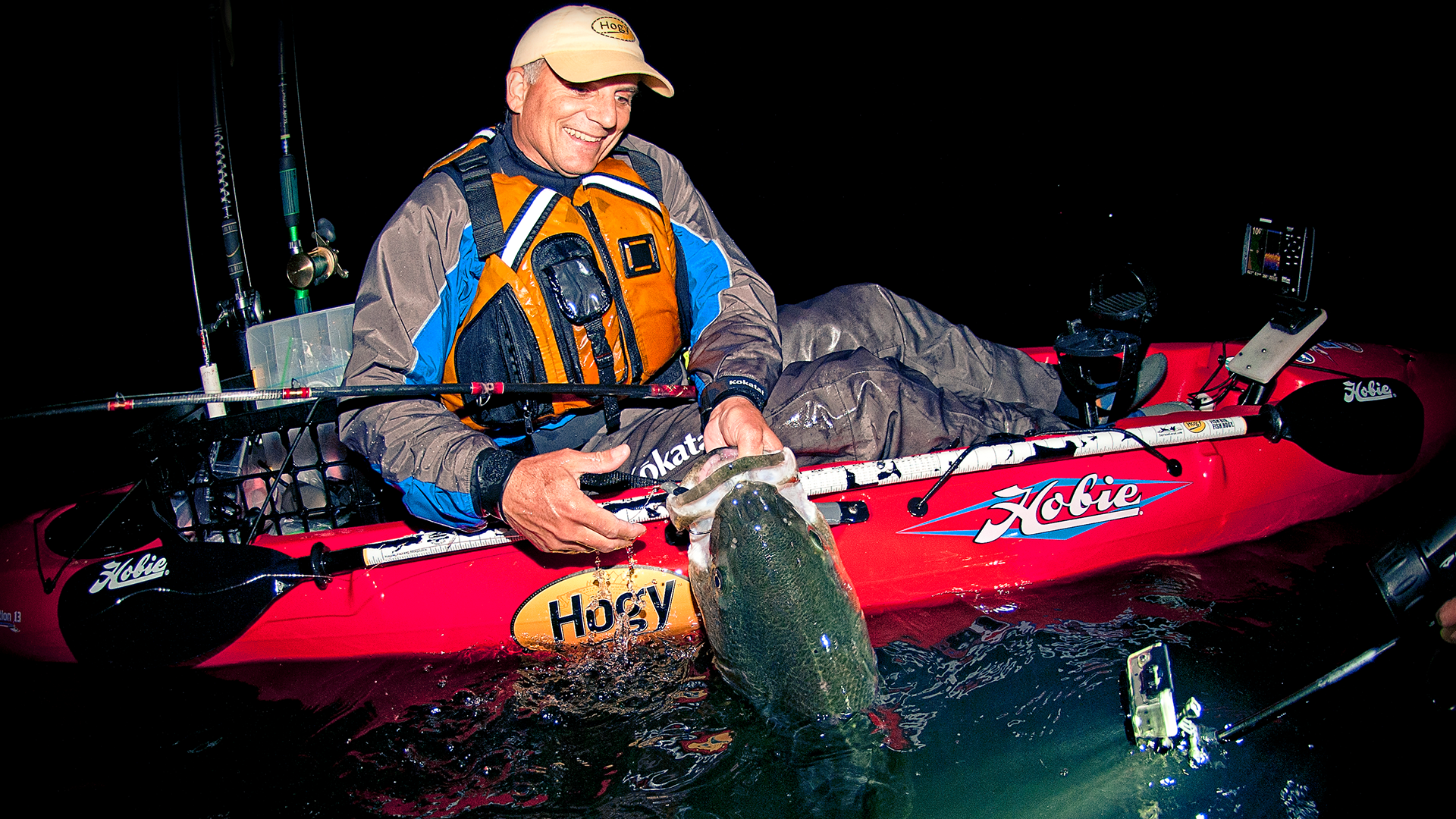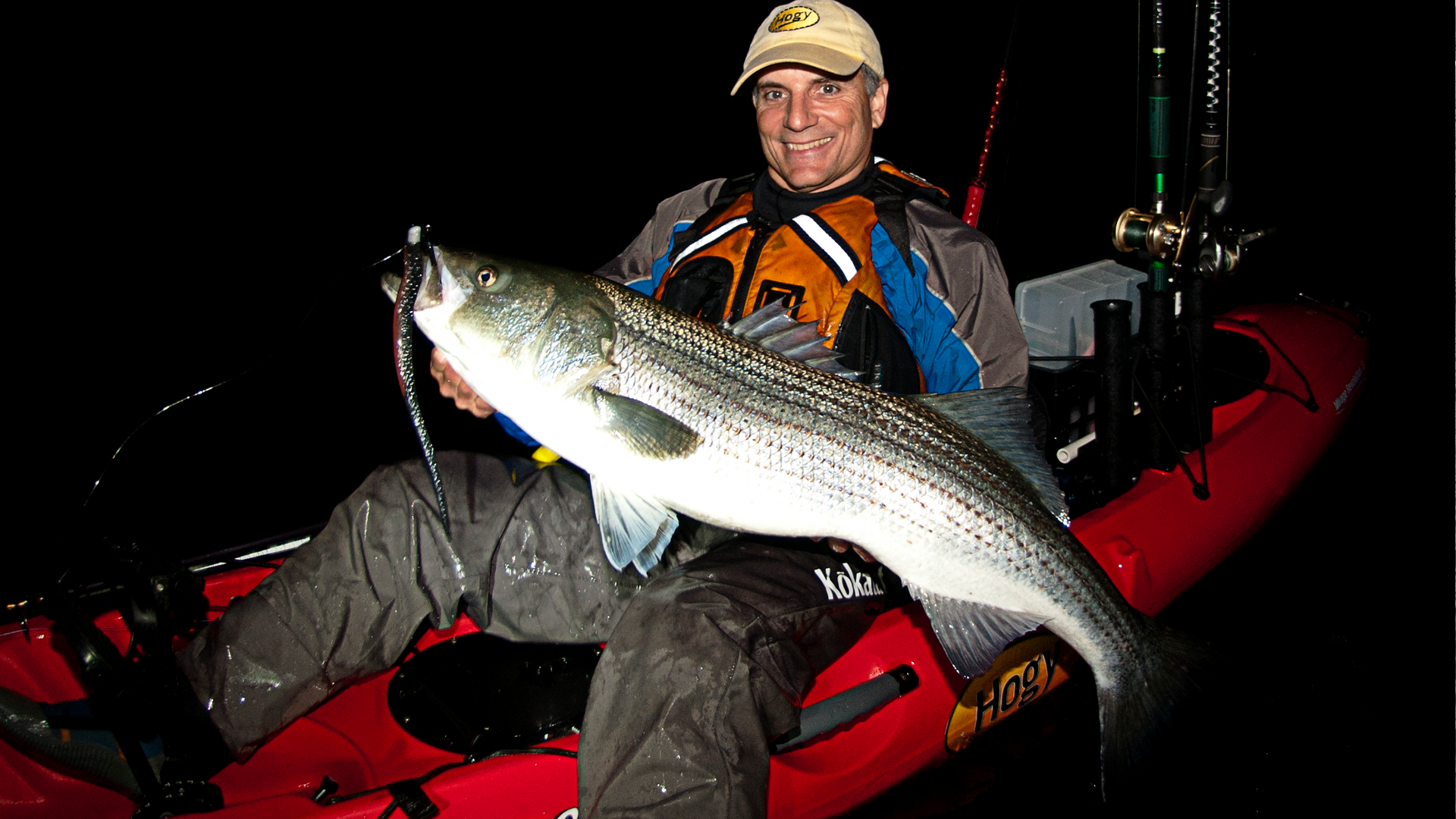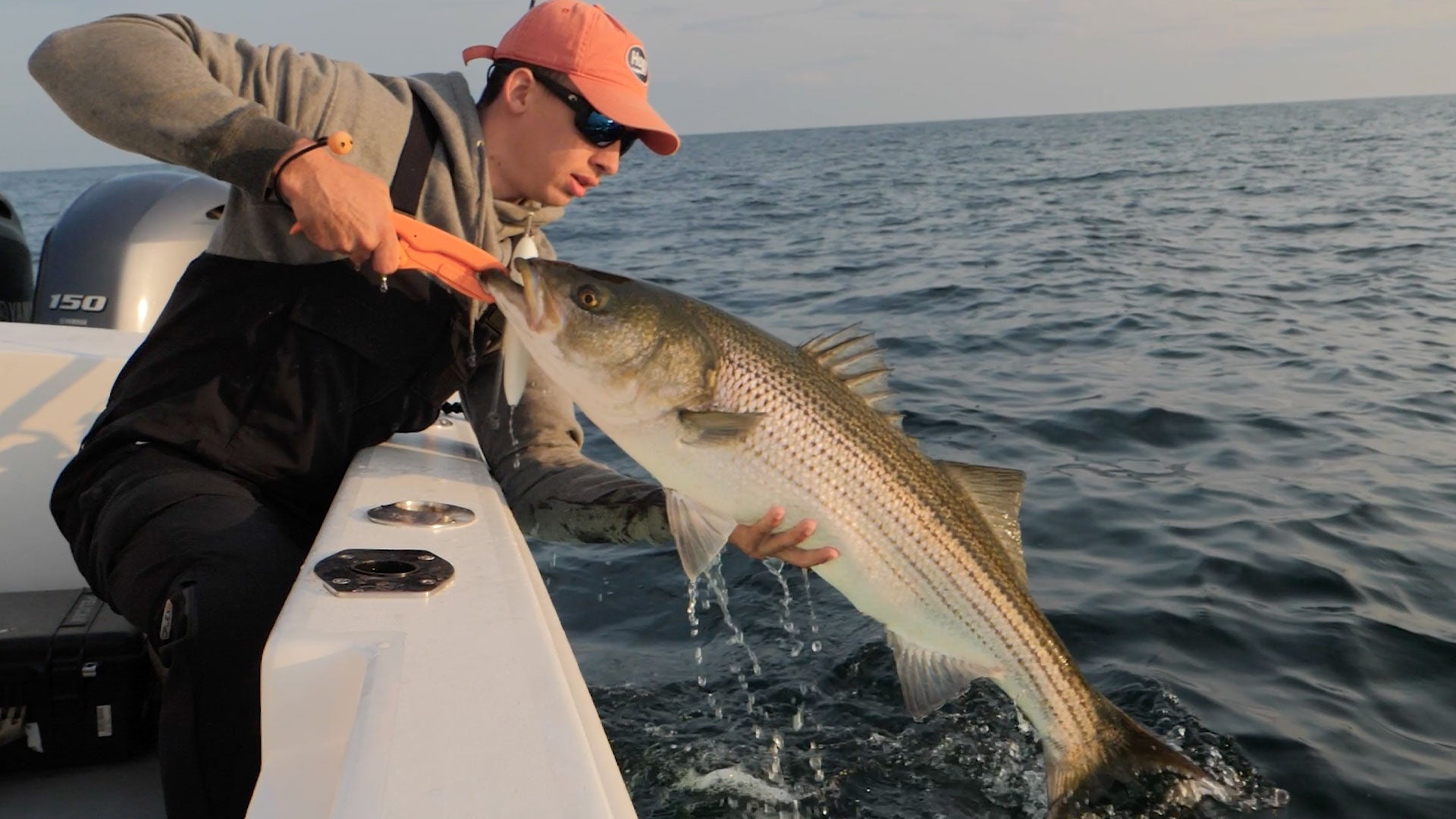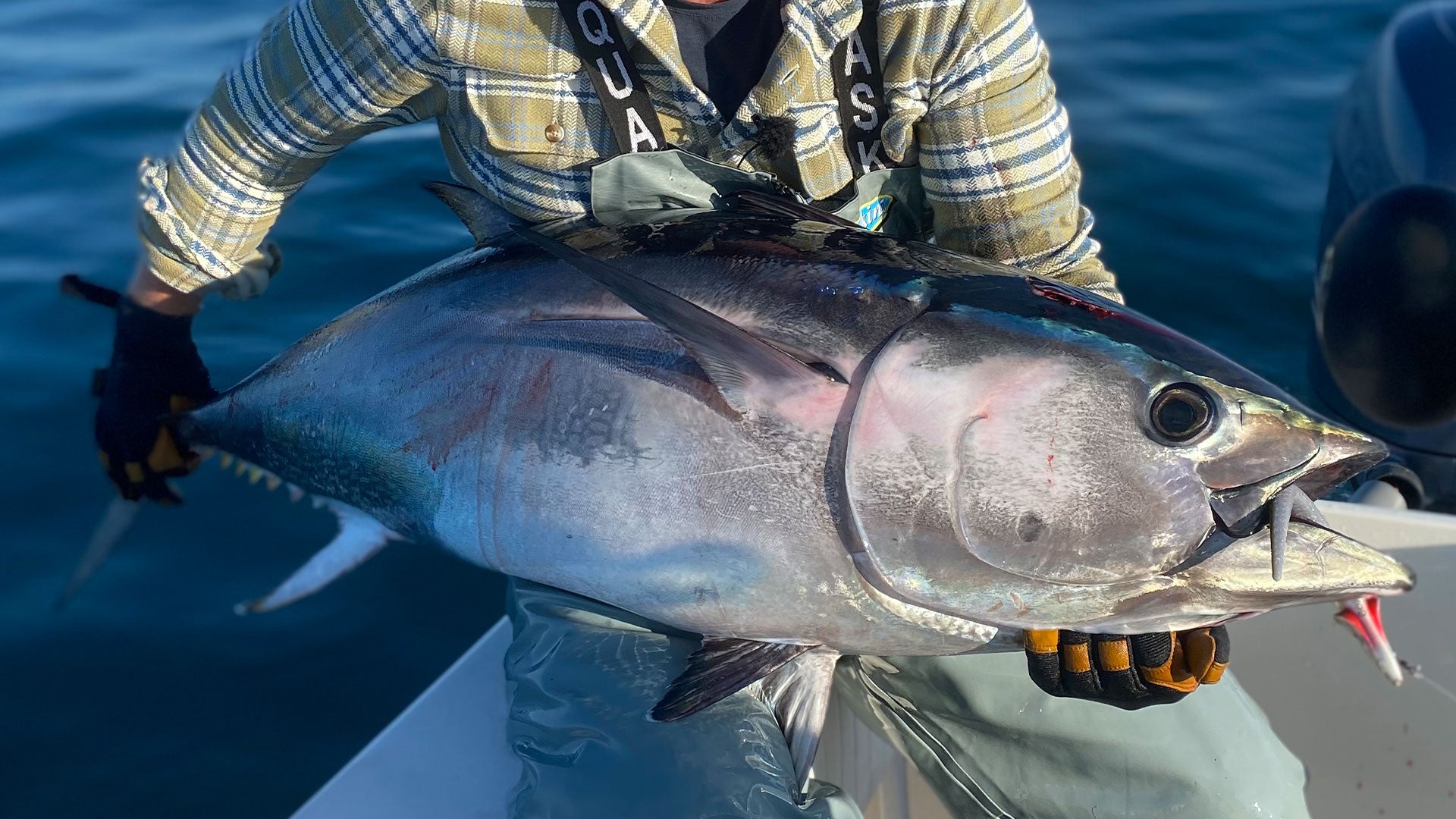Eel tail softbaits are versatile and highly effective lures that can outperform other types, such as paddle tails, in specific fishing scenarios. Their lifelike, sinuous action and durability make them ideal for various environments and target species. Here’s a look at why eel tail softbaits might be your top choice and some scenarios where they excel:
Why Eel Tails Over Paddle Tails?
Action: Eel tails provide a more subtle, undulating motion that can be more appealing to finicky fish, especially in clear or pressured waters where fish may be spooked by the more aggressive thumping action of paddle tails.
Sinking Speed: Eel tails sink faster than paddle tails due to less water resistance, making them ideal for getting to deeper strike zones quickly.
Versatility: They can be used effectively in both inshore and offshore conditions for both casting and jigging, offering flexibility in rigging and application.
Here’s a few scenarios we encounter often here at Hogy HQ:
Shore Fishing Scenarios
- Fishing the Swing in a Canal:
Example Location: Cape Cod Canal
Target Species: Striped bass, bluefish
Situation: Stripers cruising the canal, periodically lingering in drop-offs to feed
Structure: Canal with noticeable current up to 5kts
Lure Selection: 8” Hogy Pro Tail Swim-Eels, Bone
Imitation: Herring
Jig Head: 5oz Hogy HD Barbarian Jig
Technique: Cast up tide and let the eel tail sink quickly. Work the bait with jigging motion as it swings in with the tide. The natural action of the eel tail will attract predatory fish such as striped bass. Reel in slowly, allowing the lure to swing through the strike zone.
Why Swim Eel?
Eel tails sink much faster than paddle tails without the drag associated with the thumping action. The eel tail gets down faster.
- Casting to Open Water Tarpon from a Pier:
Example Location: Pier with deep water access in Destin, FL
Target Species: Tarpon, snook, cobia
Situation: Tarpon cruising open water
Structure: Open water
Lure Selection: 8” Hogy Pro Tail Swim-Eels, Bone, Olive
Imitation: Threadfin, Cigar Minnow, Ladyfish
Jig Head: 2oz Hogy Classic Barbarian Jig
Approach and Technique: Cast out and retrieve with a steady, medium speed. Incorporate occasional pauses to mimic the erratic movement of a fleeing baitfish. Ensure your gear is sturdy enough to handle tarpon’s powerful runs.
Why 8” Swim Eel? The slower, more nuanced action of an eel-tail softbait in daylight conditions is often more effective.
Inshore Kayak Scenarios
- Search and Drop for Stripers:
Example Location: 20’ of water over submerged boulder fields
Target Species: Big Striped Bass
Lure Selection: 13” Hogy Pro Tail Swim-Eels, Blamber
Jig Head: 1/2oz Hogy Classic Barbarian Jig
Approach and Technique: Utilize electronics to locate schools of striped bass while drifting. Drop the large 13” softbait on live targets. Slow jig the bait with very slow but long lifts of the rod with pronounced rod tip drops to create a 4- or 5-foot drop in the eel tail that will trigger its extra-long tail to come to life.
Why 13” Swim Eel? Stripers in areas like this could be feeding on almost anything at night but are accustomed to frequently stumbling on eels in and around the rocks.
Inshore Boat Scenarios
- Search and Drop for Stripers:
Example Location: Deep Water Rips on Block Island, RI
Target Species: Big Striped Bass
Situation: Big striped bass lazily cruising the bottom below the smaller fish that are faster and more aggressively feeding on the surface
Lure Selection: 13” Hogy Pro Tail Swim-Eels, Blamber, Olive
Imitation: Eel
Jig Head: 2oz Hogy Classic Barbarian Jig
Approach and Technique: Utilize electronics to locate schools of striped bass while drifting. Drop the large 13” softbait on live targets. Slow jig the bait with very slow but long lifts of the rod with pronounced rod tip drops to create a 4- or 5-foot drop in the eel tail that will trigger its extra-long tail to come to life.
Why 13” Swim Eel?
While we are not convinced these fish are eating eels on the bottom here, we do know that eels are a regular forage for stripers and that big stripers will only spend energy on eating big baits if it can.
Deepwater Tarpon in Passes, Bridges and Channels
- Fishing a Channel for Tarpon:
Example Location: Deep channel with strong current in Ft. Myers, FL
Structure: Drop-offs
Target Species: Tarpon
Lure Selection: 8” Hogy Pro Tail Swim-Eels, Black
Imitation: Mullet, Ladyfish
Jig Head: 2oz Hogy Classic Barbarian Jig
Approach and Technique: Position the boat up-current and drift over the channel. Use your side scan sonar to identify targets. Use a slow, steady retrieve. Allow the lure to flutter naturally in the current, mimicking an eel or baitfish.
Why 8” Swim Eel? The 8” eel tail is the perfect size to imitate a mullet. The tail will make a nice slap when it hits the water, like a mullet. You can fish an 8” eel tail extremely slow.
Offshore Fishing Scenarios
- Kerplunk on Tuna Eating Sand Eels:
Example Location: Suffolk Wreck, South of MV Tuna Fishing
Target Species: Bluefin tuna, yellowfin tuna
Situation: Tuna are periodically coming up but going down before you can get to them. Your goal here is to cast the lure to just where they were feeding and let it sink down under the birds, allowing you to fish the top 50’ of the water column.
Structure: Open water with bait balls
Lure Selection: 8” Hogy Pro Tail Swim-Eels, Olive
Jig Head: 6oz Hogy HD Barbarian Jig
Technique: Cast the lure and let it sink to the desired depth, say 50’? Engage reeling after a 10 count. Retrieve with a steady, medium-fast pace to create a commotion that mimics fleeing sand eels. The erratic movement will draw tuna from the depths.
Why 8” Swim Eel? The 8” eel tail is a more compact “castable size” allowing you to easily switch to a fast sub-surface high-speed retrieve in between kerplunks.
- Search and Drop Jigging Tuna:
Location: Regal Sword, East of Chatham
Target Species: Bluefin tuna
Situation: Scattered tuna at varied depths
Lure Selection: 13” Hogy Pro Tail Swim-Eels, Blamber, Olive
Jig Head: 6oz Hogy HD Barbarian Jig
Technique: Use electronics to locate good tuna marks. Drop the jig to the indicated depth and employ a slow pitch style jig, effectively giving the massive 13” eel tail large amounts of time in the strike zone with unbeatable action of the 13” tails. Vary the jigging speed to find the most effective cadence for the day.
Why 13” Swim Eel? It’s about getting seen. The bigger the target, the greater the field of finding it. You’re often competing with a ton of bait in this situation. You want it to be “worth a bluefin’s while” to come and eat it.

